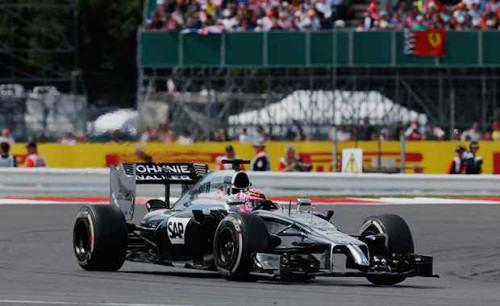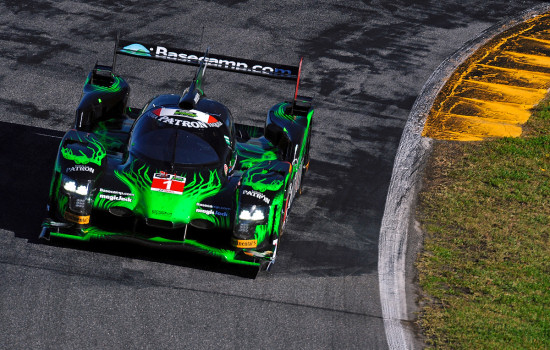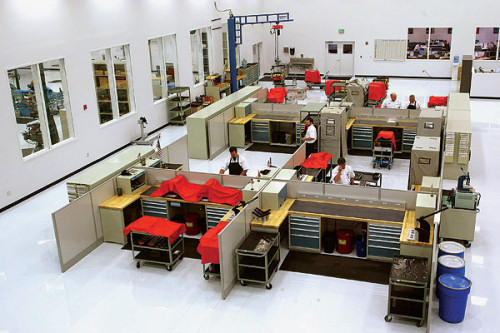The Way It Is/ Honda's diverse racing spiritby Gordon Kirby |
 Honda's founder Soichiro Honda always believed racing was essential to his company's livelihood. He called racing Honda's 'Driving Spirit' and said if you go racing you must race to win. Nothing less will do, Mr. Honda declared.
Honda's founder Soichiro Honda always believed racing was essential to his company's livelihood. He called racing Honda's 'Driving Spirit' and said if you go racing you must race to win. Nothing less will do, Mr. Honda declared.
Indeed, Honda went on to win multiple major championships, first in 500cc World Championship motorcycle racing and the Isle of Man TT races, then in Formula 1, CART, IRL and IndyCar, as well as AMA SuperBikes and SuperCross, IMSA Camel Lights and even a 1-2-3 sweep of the Paris-Dakar Rally in 1986. This year Honda returns to Formula 1 in partnership with McLaren and both power unit supplier and car constructor are hoping to re-establish themselves as race winners and championship contenders. The combination enjoyed a stellar record together from 1988-'91, winning 39 races and four straight F1 World Championships with Ayrton Senna and Alain Prost. Despite a slow start to initial testing at Jerez last week anybody would be naive, if not downright foolish to discount the latest McLaren-Honda package. First of all, Honda departed F1 with its tail between its legs at the end of 2008 after its most recent, distinctly unsuccessful F1 fling. It was a serious blemish on the company's badge of honor and you can be sure Honda's upper level management, engineering and research departments are anxious to erase those sad memories for a new spirit of pride in their latest F1 program.  © LAT And of course, there's Fernando Alonso, acknowledged by many to be the best F1 racer of his generation as well as a relentless test driver. Nor is teammate Jenson Button to be underestimated. Button is also an excellent test driver and the combination of he and Alonso should produce results. The question everyone is asking is whether or not Alonso and Dennis will be able to build a proper working relationship after the failure of their first attempt back in 2007. Meanwhile here in America Honda has put itself solidly on the motorsports map over the past twenty years. Honda Performance Development in Santa Clarita, California was founded in 1993 to spearhead Honda's entry into Indy car racing and since then no other manufacturer has matched Honda's success in Indy cars. Over the past twenty years Honda has scored 211 race wins in CART/IRL/IndyCar, including 15 drivers championships, six manufacturers championships and 10 Indy 500 wins. HPD made its sports car racing debut at Sebring in 2007 with an Acura LMP2 car and scored a remarkable first win for the HPD LM-V8 engine and the first for a Honda racing engine designed and developed outside of Japan. In eight years of ALMS, World Endurance Championship and Tudor United SportsCar Championship competition, HPD has recorded 74 race wins, including two class victories at the 24 Hours of Le Mans, and multiple manufacturer championships in the ALMS from 2008 to 2013. HPD cars and engines won the LMP2 category at the 24 Hours of Le Mans in both 2010 and 2012 and became the first American racing organization in nearly forty years to win an FIA World Championship by taking the WEC's LMP2 title in 2012. Last month Allen Miller was promoted to the job of HPD's race team leader. Miller has been with HPD for 21 years and is now in charge of HPD's engine program in the Verizon IndyCar Series plus its new ARX-04b P2 car and engines in the TUSC and WEC endurance sports car series, and its Acura TLX GT in the Pirelli World Challenge. After four years working at Nissan Performance Technology in California, Miller joined HPD as an engine builder in 1994, the first full year for American Honda's North American motorsports arm. During Honda's successful CART years Miller became supervisor of the engine shop in 1997 and served as assistant manager from 2000- '02. Over these years Honda engines won four CART manufacturers' championships and 65 races from 164 events. Honda-powered drivers also won six consecutive CART titles from 1996-2001. In 2006, Miller was named project manager for HPD's prototype sports car program, originally competing under the Acura banner. Two years later he was named project leader of the ALMS program so he was the natural choice for his latest job as HPD's overall boss. Miller is assisted in his new role by three veteran Honda engineers. Troy Hanson manages HPD's IndyCar effort; Matt Niles succeeds Miller as manager for prototype sports car racing programs; and Lee Niffenegger manages the Acura effort in the Pirelli World Challenge.  © Honda/HPD "Of course, the original plan was to have a closed top P1 car," he remarked. "But that was stopped by Honda so we sat on the sidelines and continued to develop and develop. A year ago we were pretty far down the road with another P1 car which Honda finally decided to pull back from and focus on P2. So we updated the design that we had from 2010 until now. It was originally a P1 car and is now a P2." Miller emphasized the commitment to improved safety with the latest car designed by Nick Wirth at Wirth Research in the UK. "The monocoque was designed around P1 regulations," he said. "It has Zylon intrusion panels inside and is fully to the FIA safety specs. It could be turned back into a P1 car but there's no plans for that. But the big push has been in safety and making the car as up to date and safe as we possibly can. "To go from a P1 to a P2 car we had to widen the bodywork and change a lot of things from what we've learned over the last several years. We set some pretty aggressive targets on this car as far as reducing drag and maintaining downforce. We've got a little work to do as far as understanding how to best use that but I think it's coming along. We were faster at Daytona on the banking than we had ever been with the ARX car so that was encouraging." The engine is the familiar production-based 2.8 liter V8 turbo HPD has been developing over the past five years. "It's really the same engine we've been running since 2011 when the rules changed," Miller said. "As far as this year in P2 for IMSA they've increased the restrictor size and raised the boost. That started at the end of last year at the last two races and it worked well, so that's carried over into this year." In the WEC, P2 cars are required to use smaller intake restrictors and less boost but they're also 40 kilograms lighter. The twin restrictors for Honda's engine in the WEC are limited to 30 millimeters. They're 2.5 mm larger in the TUSC. Turbo boost is limited to 195 KPA in the WEC wile the TUSC has increased P2 engine boost this year to 205 KPA. Fuel capacity in the TUSC has been increased from 75 to 78 liters while the weight minimum for a P2 car in the TUSC is 940 kg vs 900 kg in the WEC. Miller discussed HPD's P2 engine program for this year. "The WEC mandates the number of engines you can use so you only get three for the year, including Le Mans," he noted. "So you would use four engines for a program, one engine to test and three to race through the year. Here in the TUSC, it's four engines to run the whole season, including Daytona.  © Mike Levitt/LAT USA "We've got around seventeen or eighteen engines that we rotate. The teams will carry a spare engine, especially for the European races because they're a long way away. So we have the capability to support seven or eight cars. We have room for more with the inventories we have." Miller says HPD is prepared to build as many as four more ARX-04bs. "We have parts in line to build a third car if anyone wants to buy one," he said. "We've laid our plans out through purchasing towards building six cars and we've purchased long lead items to build four cars." HPD seriously considered establishing a European base to service its WEC customers but decided that its home in Santa Clarita is the perfect location to provide support for a global championship. "We do all our engineering and support out of HPD," Miller remarked. "We fly over however many people are needed for each race. In the past we've looked at trying to set up a base in Europe, but it doesn't make sense doing it just for the handful of races in Europe. The rest of the WEC races are scattered around the world and in California we're situated in a good place to fly to them. "We've done some shake-down tests and have set up phone conversations through Skype. We've set them up so the teams can send live data back to us and we can sit there and watch it. If they can do twenty or forty laps of pre-race testing like that it saves us $10,000 in travel for a few of our guys to watch a car run around for a few hours. So that's worked out well." Miller's team of HPD engineers have also been working hard this winter in company with Wirth Research to develop Honda's IndyCar aero kits. He's confident Honda has established a good baseline for its aero kit and excited about IndyCar's attempt to open up its rules package. As the season unfolds I'm sure Miller will be talking a lot about aero kits.  © Honda/HPD A dozen people work in two groups building engines in Santa Clarita. One group builds and maintains Honda's 2.2 liter turbo V6 IndyCar engines and another group builds the P2 turbo V8s and Acura TLX engines for the Pirelli World Challenge series. HPD also builds Honda Formula F engines and supports a wide range of grass roots motorsports programs in SCCA, NASA, USAC midgets, quarter midgets and K series Honda engines used in Formula Atlantic and Dennis McCormack's new Formula Lites series. In addition HPD supplies engine components plus things like suspension pieces and brakes for Honda Civics competing in the Continental Tire SportsCar Challenge and Pirelli World Challenge; competition parts for B-Spec Honda Fits for road racing and rallying; engines for several karting applications; engine parts for import drag racing; engines for an Ariel Atom spec series on the east coast; street performance products for the Honda CR-Z (sold through Honda dealers); and supports the Pikes Peak International Hill Climb in conjunction with Honda R&D and Honda's Ohio-based Research Team. Finally, American Honda is the title sponsor of the Honda Grand Prix of Alabama IndyCar race at Barber Motorsports Park and the Honda Indy 200 at Mid-Ohio while Honda Canada is the title sponsor of Toronto's IndyCar race. While the likes of Chevrolet, Ford and Toyota pour money into supporting NASCAR's top teams to help sell their market-leading range of pick-up trucks, we're fortunate to have two foreign-based manufacturers in Honda and Mazda that are great drivers not only of sports car and open wheel racing but motorsports as whole in America. Both companies are making major contributions to the sport while helping sell cars across North America in a booming auto market. |
|
Auto Racing ~ Gordon Kirby
Copyright ~ All Rights Reserved |
